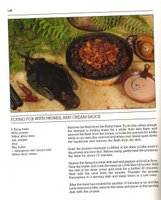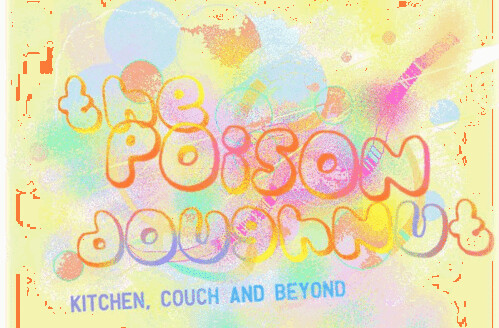Kaikai Aniani: A Guide to Bush Foods, Markets and Culinary Arts of Papua New Guinea

Written by R.J. May, first published in 1984.
This is really a great cookbook. Informative to the point of "thanks for sharing", chockers full of faintly-normal-sounding recipes that you could probably make a good go of if you wanted to, and with entire sections devoted to things like "Furry (and Spiney) Edible Animals" and "Traditional Stimulants". The recipes are very simple, homely, designed for expats living far from home and who need to adapt local ingredients to suit their western palates. The book is more concerned with telling readers what to do to make the local foods more appealing, rather than providing any sort of traditional cooking techniques. Although these techniques are covered elsewhere in the book, for purely interest value. Lots of historical and cultural information is included, along with artfully-staged photos, such as my favourite: a still-life of crab on woven mat, bowl of tomato soup, soup can in background and scattering of cardamom seeds.
It also has emotional value for me, as someone who spent their first fifteen years living in Port Moresby. Ah, the memories. Those trips to the Waigani Markets, where we'd see scoops of flesh being carved from live turtles, fly-blown magani carcasses hanging from a stick and metres of blanket covered with raw peanuts still on the branch. If we were good, we'd each get a peanut branch, and we'd rattle the peanuts and pretend they were cheerleader pompoms.
This book also inspired my one-and-only attempt at doing a real mumu. It started well: the giant hole was dug the day before (by me, with a shovel, in the 35-degree heat), a trip was made to the local landscaping joint to buy rocks that wouldn't explode from the heat (note: DON'T choose shale), varieties of meats were purchased along with kaukau (sweet potato), yams, carrots and leafy greens, fresh banana leaves were located and purloined, firewood organised, and so on. Quite an effort. At 9am we fired up the hole: a huge 2m-across bonfire that threatened to set fire to the house and sent black smoke up for miles. (Since then I've learned that this was actually illegal. Oh well, no regrets.) At 2pm the flames died down and we shovelled off the hot ash, inserted the banana-leaf parcels of meat and vegetables and then shovelled a ton of dirt over the whole thing. Cue beer. Come 7pm, dirt comes off and parcels come out.
The meat looked good. It was just-tender, infused with leaf and earth flavours, tasty and delicious. However the vegies...well, they just didn't make it. They were like charred little meteorites fallen to earth millions of years ago. Charcoal didn't even begin to describe them. We ended up rolling them down the street and taking bets on whether or not they'd shatter when they hit the wheelie bin.
Anyway.
Most-cooked recipe: I haven't ever set out specifically to cook anything out of this book. But reading through the recipes, I realise that I have often concocted something quite similar to this one: Soup-On-Patrol.
- Water
- Leafy greens
- Soy sauce
- Sesame oil
- Egg (optional)
The following recipe is a useful one on patrol: it is nutritious, easy to digest after a long walk, and requires little effort to prepare. Boil the water and add soy sauce to flavour, and a dash of sesame oil. Add a handful or two of any greens which are available and let them cook for about 2 minutes. If you have an egg you can drop this in at the last moment and stir.
Mine usually contains stock, and maybe some leftover meat, spring onions and so on, but it's the same thing. Greens in a light broth. Great when you're home alone for lunch and want to use up stuff in the fridge.
Recipe I haven't tried, but it was one of the reasons I bought the book: Scrambled Turtle Eggs, Sea Urchin Omelette, Prawns in a Coconut, Baked Breadfruit, Tapioca Cakes, Magani Stew... and the list just goes on.
Rejected recipe: Flying Fox with Prunes and Cream Sauce. Part of me really wants to make this. The other part, happily, has so far triumphed.
Wouldn't you just love to serve up the flying fox for Mother's Day dinner?
General good things: There's a few things that, with a giant leap of faith in R.J. May, I could have a go at. The recipes mostly look like they were transcribed from the words of a scraggy old betelnut-toothed haus meri from Tabubil who's been cooking for her expat employers for 20 years and is trying to introduce Western techniques to her market ingredients and to move beyond rice-and-Triple Seven-tinned-fish on a Friday night. Clam Chowder, Tapioca Cakes, Beef and Ginger, Grilled Pitpit, Beans in Coconut, Cucumber Soup, Pawpaw Sherbet: I could definitely try them out.
General bad things: Sago Grub Satay. That's right, sago grubs.
3 dozen sago grubs
water
peanut satay sauce
Steam the sago grubs for about ten minutes. I prefer to remove the heads but this is not necessary. Put the grubs on satay sticks (six to a stick) and grill over a charcoal fire for about 5 minutes each side. Coat with the sauce and serve with rice. This is a very rich dish.
Not to mention the Fried Bandicoot, Magani Stew and the Baked Snake.
First, catch your snake.
That has to be the best first step for a recipe, existing anywhere, ever.
The size of the serving, of course, depends on the snake.
Well, of course. OBVIOUSLY.
Lameness factor: Well. I'd give it a 5. It's the lameness that makes most of this book so incredibly appealing.
Overall rating(from 20): 20. It's the flying fox. Who couldn't love that? Em nau!







No comments:
Post a Comment